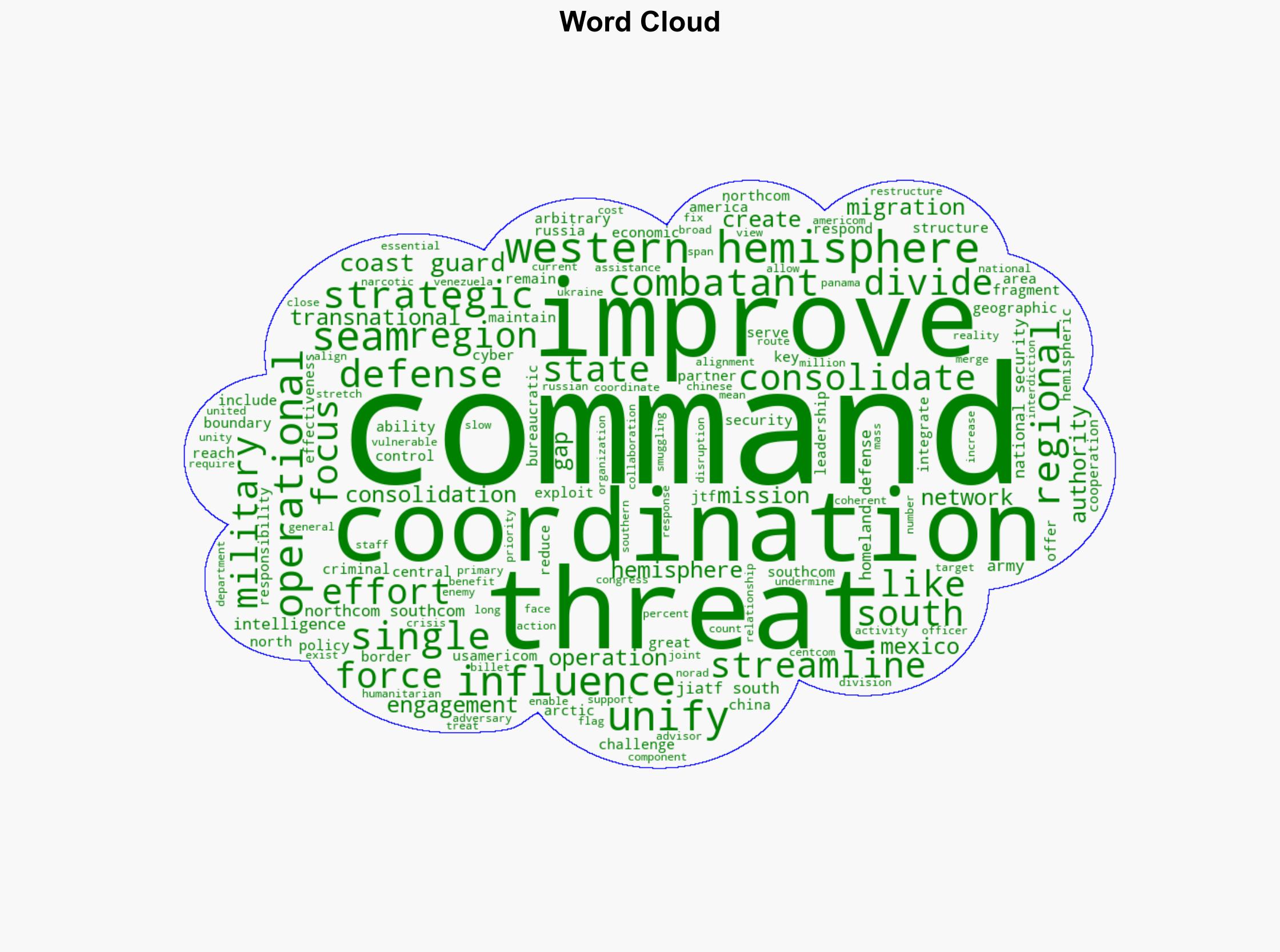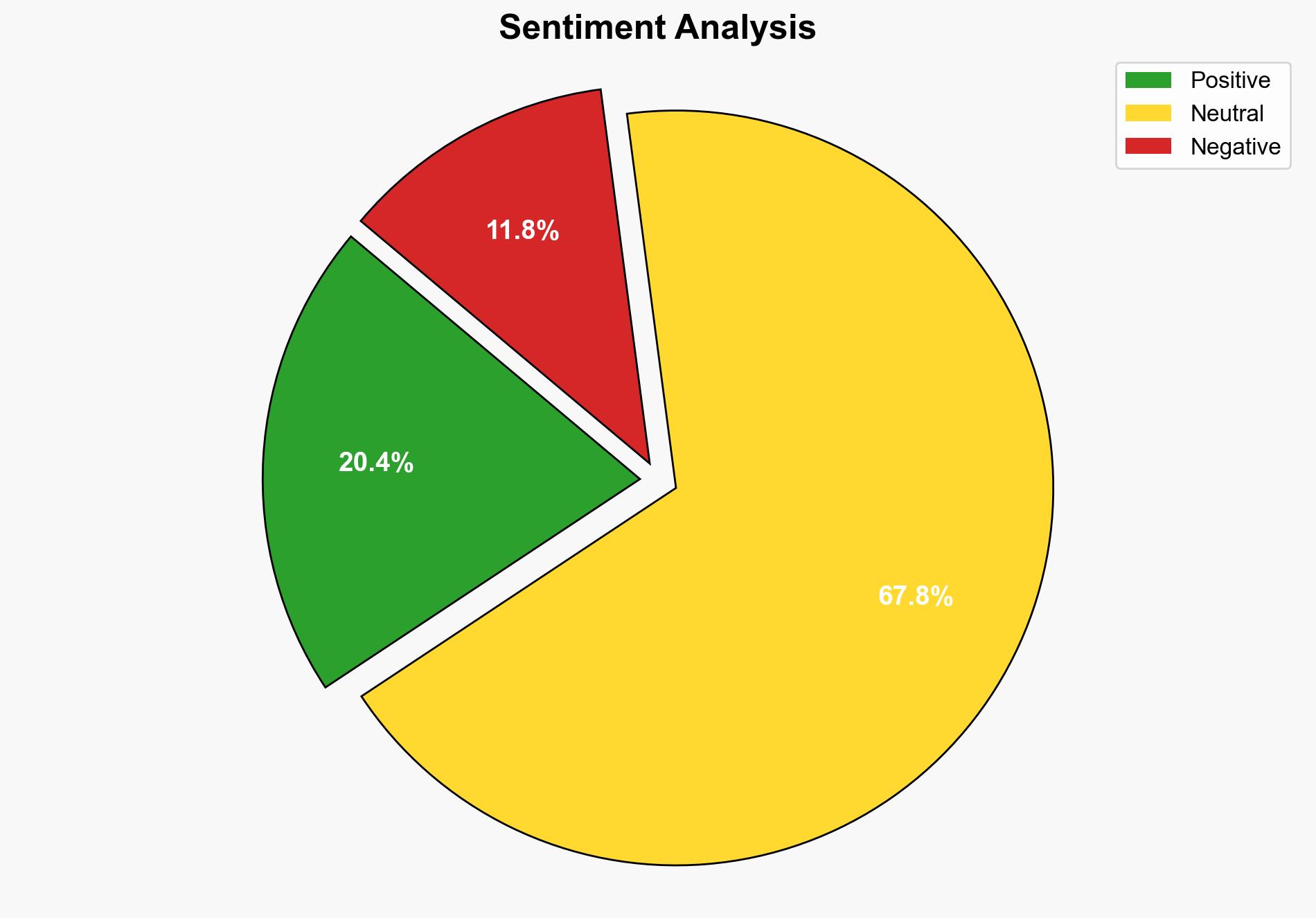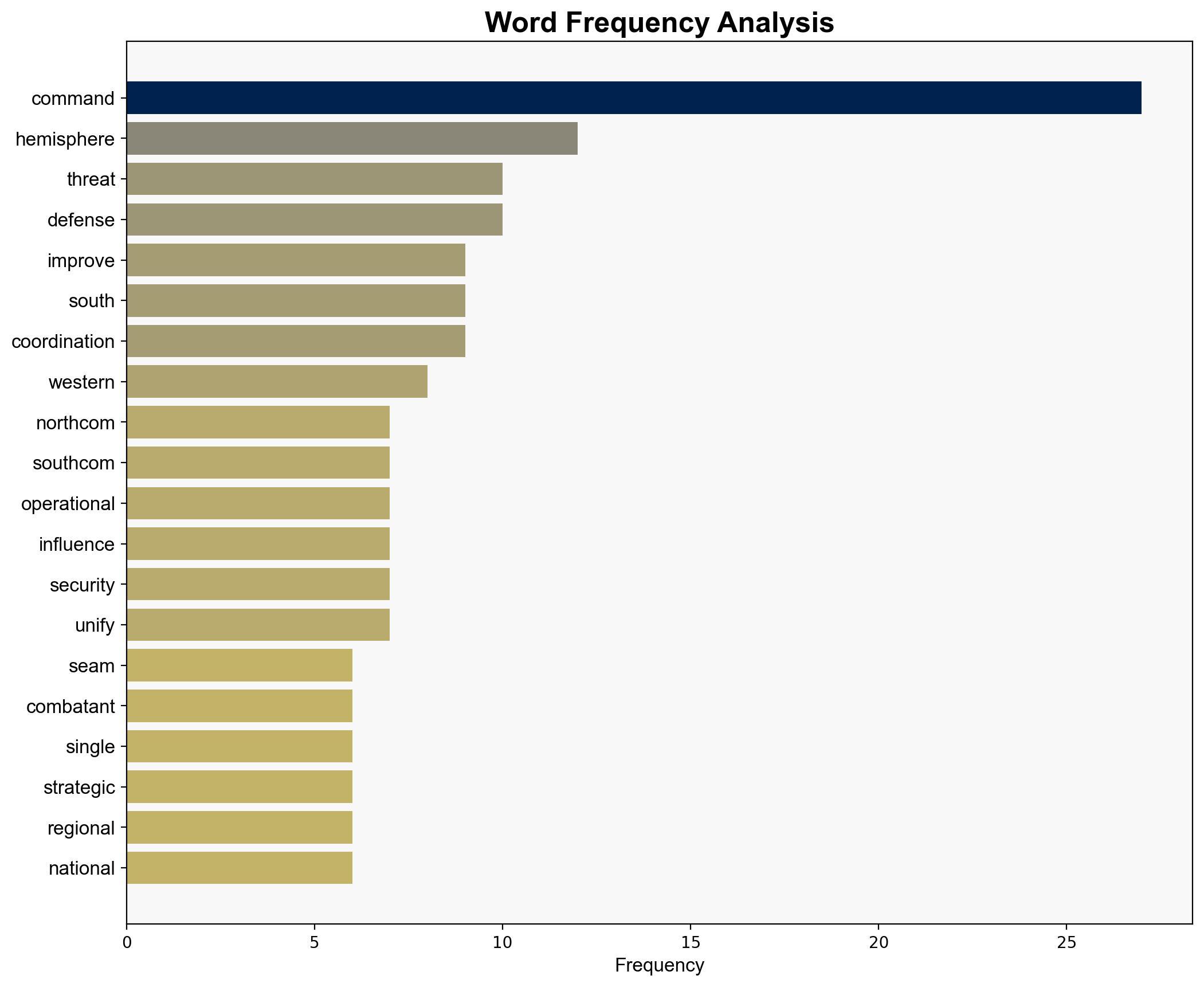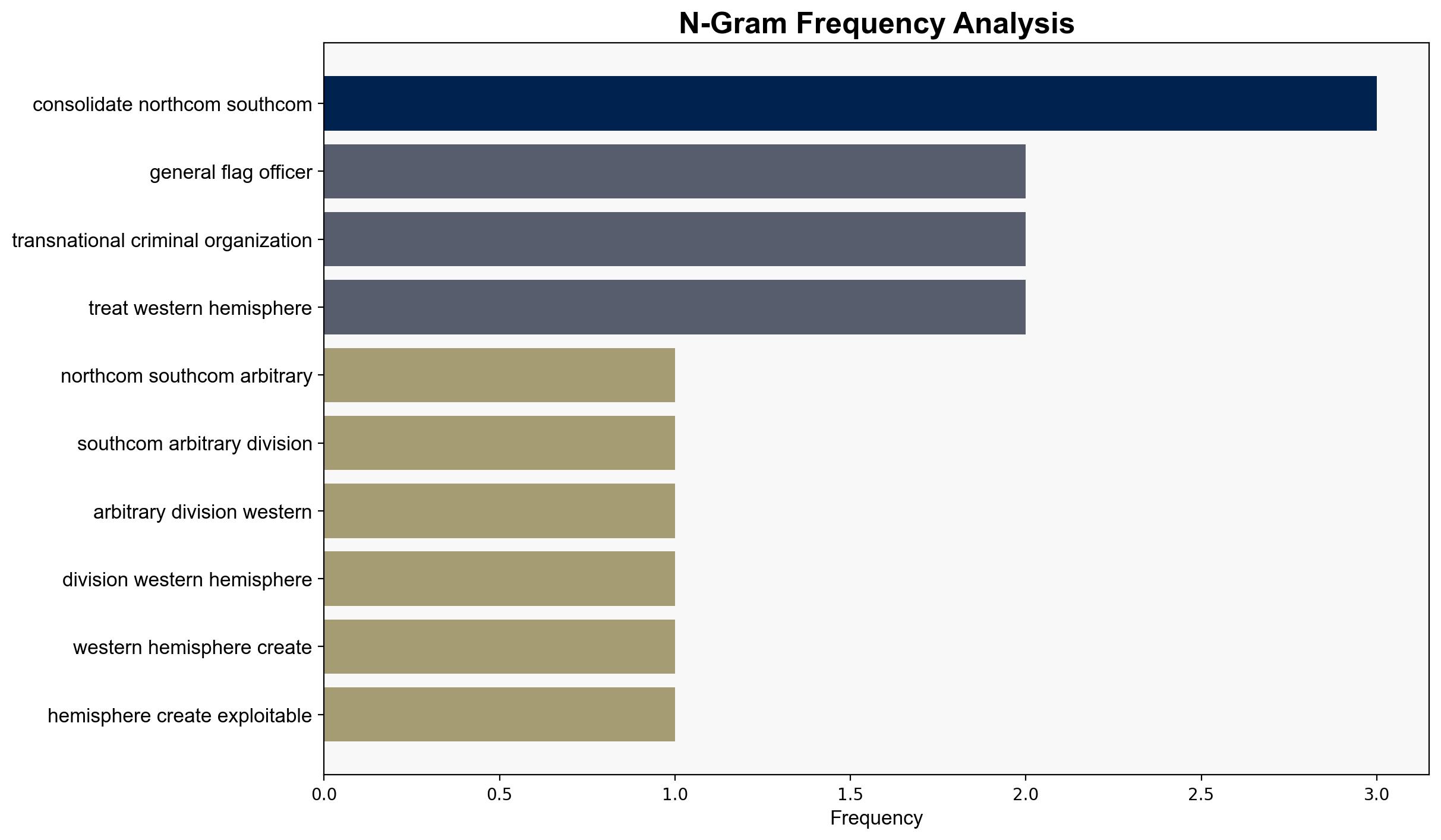Consolidate NORTHCOM and SOUTHCOM – Defense One
Published on: 2025-08-05
Intelligence Report: Consolidate NORTHCOM and SOUTHCOM – Defense One
1. BLUF (Bottom Line Up Front)
The consolidation of NORTHCOM and SOUTHCOM into a single command structure, potentially named USAMERICOM, is strategically advantageous for enhancing operational efficiency and addressing transnational threats. This hypothesis is better supported by the evidence, suggesting improved strategic clarity and cost savings. Confidence Level: Moderate. Recommended Action: Initiate a feasibility study on the consolidation to address potential operational and geopolitical challenges.
2. Competing Hypotheses
1. **Hypothesis 1**: Consolidating NORTHCOM and SOUTHCOM will enhance strategic clarity, streamline command structures, and improve the U.S. military’s ability to respond to transnational threats across the Western Hemisphere.
– **Supporting Evidence**: The current division creates exploitable seams for adversaries; a unified command could improve coordination and response capabilities.
2. **Hypothesis 2**: Maintaining separate commands is essential due to distinct regional challenges and the risk of over-centralization, which could dilute focus and responsiveness to specific threats.
– **Supporting Evidence**: Each command has unique missions and operational environments that require tailored approaches; consolidation might lead to bureaucratic inefficiencies.
3. Key Assumptions and Red Flags
– **Assumptions for Hypothesis 1**: A unified command will not face significant bureaucratic hurdles; operational benefits outweigh potential integration challenges.
– **Assumptions for Hypothesis 2**: Regional specificity is crucial for effective threat response; existing coordination mechanisms can be optimized without structural changes.
– **Red Flags**: Lack of detailed analysis on potential integration challenges; possible underestimation of regional political sensitivities.
4. Implications and Strategic Risks
– **Implications**: Consolidation could lead to improved resource allocation and unified strategic objectives across the hemisphere. However, it may also encounter resistance from regional partners and within the military hierarchy.
– **Strategic Risks**: Potential for increased vulnerability during the transition phase; adversaries might exploit initial coordination gaps. Economic and geopolitical tensions could arise if regional stakeholders perceive the move as a U.S. power consolidation.
5. Recommendations and Outlook
- Conduct a comprehensive risk assessment and feasibility study to evaluate the operational and geopolitical impacts of consolidation.
- Engage with regional allies to ensure alignment and address concerns regarding the consolidation.
- Scenario Projections:
– **Best Case**: Seamless integration leading to enhanced threat response and cost savings.
– **Worst Case**: Operational disruptions and strained regional relations.
– **Most Likely**: Gradual improvement in coordination with initial challenges in integration.
6. Key Individuals and Entities
– Secretary Hegseth (advocate for consolidation)
– Transnational criminal organizations (exploiting current command divides)
– Regional partners in Central and South America
7. Thematic Tags
national security threats, cybersecurity, counter-terrorism, regional focus




